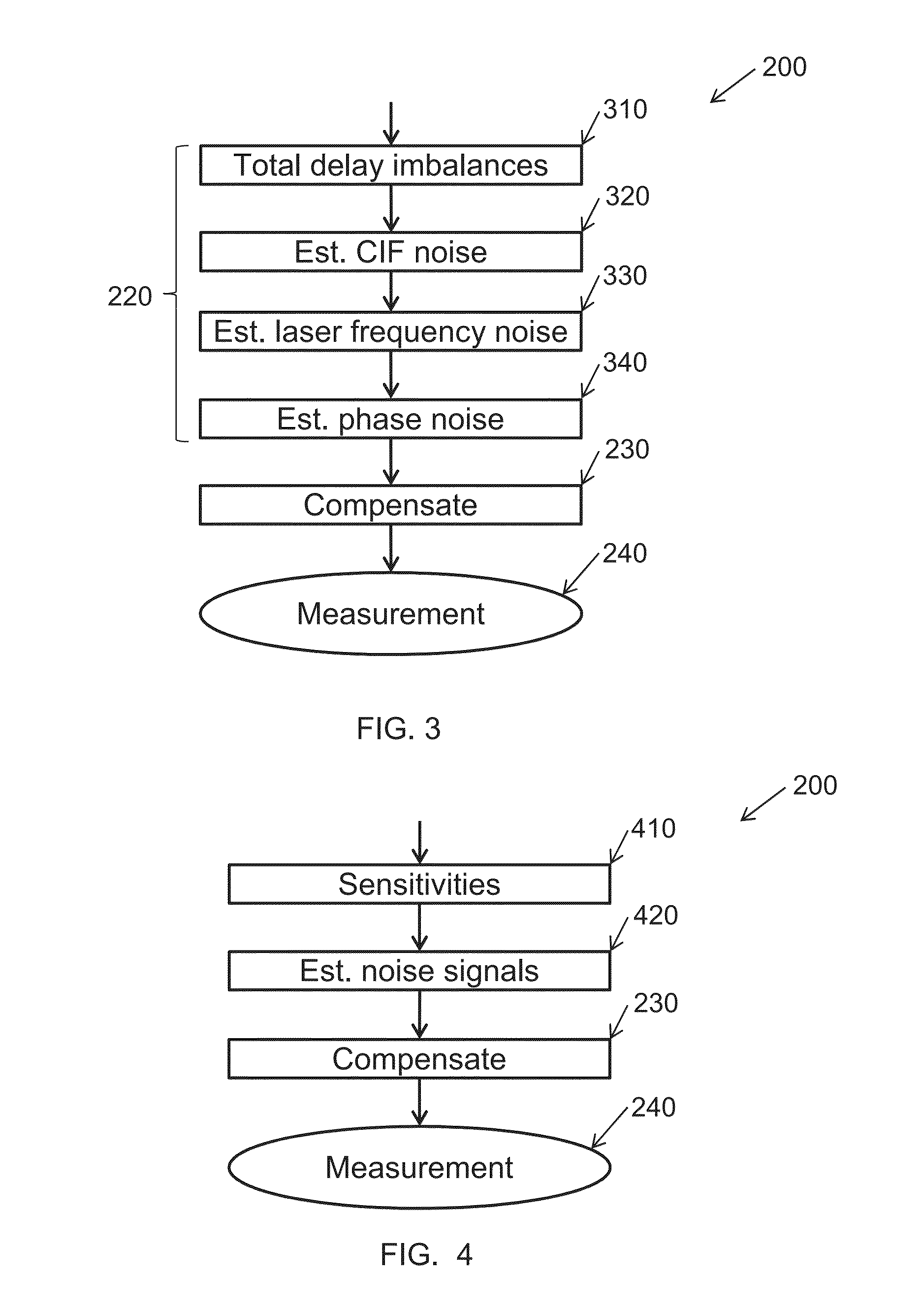Processing data from a distributed fibre-optic interferometric sensor system
a technology of interferometer and sensor system, applied in the direction of amplifiers, transmission, geological measurements, etc., can solve the problems of difficult and expensive to completely isolate the reference sensor from fluctuations in environmental parameters, and achieve the effect of reducing nois
- Summary
- Abstract
- Description
- Claims
- Application Information
AI Technical Summary
Benefits of technology
Problems solved by technology
Method used
Image
Examples
example 1
Weighted Mean With Time Varying Weighing Functions
[0070]In this example suitable for a sub-sea seismic sensor system, the method is implemented using these steps for each seismic shot:[0071]1. Subtract a linear bias trend from each raw measurement time series of the reference sensors (“reference trace”), defined as a straight line from the first to the last data point recorded for the current seismic shot.[0072]2. Calculate a square envelope trace for each reference trace, i.e. corresponding to each reference sensor:[0073]a. Apply a bandpass filter with low frequency cut-off and high frequency to the reference trace.[0074]b. Square the filtered reference trace.[0075]c. Convolve the squared trace with a suitable impulse response to obtain the square envelope.[0076]3. Calculate a time varying weight corresponding to each reference trace / reference sensor as the inverse of the square envelope found in the previous step.[0077]4. Calculate the common reference time series for each point i...
PUM
 Login to View More
Login to View More Abstract
Description
Claims
Application Information
 Login to View More
Login to View More - R&D
- Intellectual Property
- Life Sciences
- Materials
- Tech Scout
- Unparalleled Data Quality
- Higher Quality Content
- 60% Fewer Hallucinations
Browse by: Latest US Patents, China's latest patents, Technical Efficacy Thesaurus, Application Domain, Technology Topic, Popular Technical Reports.
© 2025 PatSnap. All rights reserved.Legal|Privacy policy|Modern Slavery Act Transparency Statement|Sitemap|About US| Contact US: help@patsnap.com



